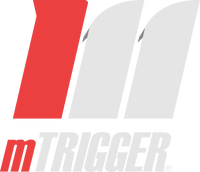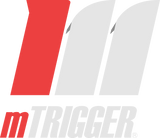Improving Rowing Performance with mTrigger Biofeedback
Rowing is a sport that continues to gain popularity in both a professional and amateur setting. From skilled rowers at elite clubs and Universities to general fitness participants using erg machines, rowing is seemingly more difficult than it looks. Ask anyone who has tried it, technique matters.
The rowing motion largely relies on the biceps, quads, and core muscles to drive the motion.(1) Ideally, the biceps should activate after the quads in the rowing stroke.(1) However, figuring out the proper timing of the stroke and proper muscle activation pattern to go along with it can be difficult for novice rowers and even rowers experiencing back pain. It is not uncommon to see rowers activate the biceps too early causing them to finish the stroke prematurely.(1) Using mTrigger sEMG biofeedback can help to identify common errors in rowers that can be used by rehab professionals and coaches to improve muscle activation, decrease pain, and enhance performance.(1)
The rowing stroke is composed of four phases.(1)
-
Catch Phase: initial position with the body ready to start the motion
-
Drive Phase: straightening of the legs while keeping the arms straight
- Quads are contracting!
-
Finish Phase: pulling the bar to the body and leaning back
- Biceps are contracting!
- Recovery Phase: sliding back to the catch position and relaxing the muscles
By understanding each phase of the stroke, you can then look at deviations in expected muscle activation during each phase to help identify where movement patterns may break down. For instance, low back pain is the most common injury seen in rowers, encompassing 32-52% of all injuries.(2) In this population, a higher EMG is seen in the thoracic and lumbar paraspinal muscles than in rowers without low back pain.(2) This indicates that when low back pain is present, rowers may over utilize their back paraspinal muscles to help generate force, specifically during the drive phase of their stroke.(2) To note, the paraspinal muscle will certainly be activated during the drive phase of the rowing motion, individuals with low back pain just demonstrated a reliance on paraspinal muscles instead of generating the majority of their power through the biceps and quads.(3) In addition to the quads and biceps, the glute max and biceps femoris play a role in force production.(3) The core and abdominal muscles have the role of decelerating trunk extension and assisting trunk flexion when moving from the drive to the recovery phase.(3)
You can use these expected sEMG muscle activation in a handful of ways. First of all, placing mTrigger biofeedback on the common muscles utilized in rowing provides insight on athlete muscle activation levels, timing of muscle activation, and stroke performance.(1) Second of all, mTrigger biofeedback can provide a glimpse of the effects of muscle fatigue. During an all-out race or high intensity erg training, fatigue is inevitable. mTrigger biofeedback used during rowing can demonstrate where and when this fatigue starts to happen, and the rowing motion falls apart. Take a look at how that works.
One study on rowing showed athletes with higher strength rowed the first 500m faster before fatiguing compared to rowers with a higher endurance level.(1) This indicates the need for a strategic balance between strength and endurance. As fatigue levels increase towards the end of a race, activation of more muscle fibers will be necessary to perform at the same level and row at the same speed.(1) Using the visual feedback provided by mTrigger during training can help to improve muscle activation when under fatigue and provide data on the average and peak MVC of the desired muscles during the exercise.
The strength necessary to improve performance during rowing is highlighted by the power demands of the sport. Not surprisingly, elite rowers will spend up to 20% of their training time dedicated to strength training.(4) Often training with loads at 85-95% of their one-rep max.(4) Furthermore, this intensity of strength training did not affect power output or rowing performance when following a strength training session, and rowers were able to maintain their performance level.(4)
For rowers, exercises such as a snatch grip high pull, clean, back squat, deadlift, bench press, snatch grip high pull, and weighted sit-ups are commonly utilized.(4) If mTrigger biofeedback demonstrated a discrepancy in muscle activation during rowing, it might be a good idea to use mTrigger biofeedback for strength training these same muscles. This will help provide patients with immediate real-time feedback to ensure they are making effective changes.
*Here we see biofeedback helping to improve glute muscle activation.
*Here we see biofeedback helping with even weight distribution and maintaining muscle activation.
*With this faster motion, mTrigger can be used to see what is happening physiologically at the catch, with eccentric loading and muscle activation.
Summary
mTrigger biofeedback has several uses when it comes to rowing and improving rowing performance. Using mTrigger biofeedback to identify muscle activation patterns during the rowing stroke allows for analysis of timing and order of muscle activation for coaches and rehab providers. Furthermore, it can be used in the gym for strength training, helping to retrain the necessary movement patterns, muscle timing, and muscle activation found during rowing.
Importance of Measuring Muscle Activation
|
Biofeedback for ACL Rehabilitation
|
References
- Grzejszczak T, Roksela A, Poświata A, Siemianowicz A, Kiełboń A, Mikulski M. Surface Electromyography Data Analysis for Evaluation of Physical Exercise Habits between Athletes and Non-Athletes during Indoor Rowing. Sensors (Basel). 2024;24(6). doi:10.3390/S24061964
- Yamashita M, Ishida T, Osuka S, et al. Trunk Muscle Activities during Ergometer Rowing in Rowers with and without Low Back Pain. J Sports Sci Med. 2023;22(2):338-344. doi:10.52082/JSSM.2023.338
- Oshikawa T, Takaki N, Nakamura K, et al. Change in the activity of trunk and lower limb muscles during 2000-m rowing. The Journal of Medical Investigation. 2022;69(1.2):45-50. doi:10.2152/JMI.69.45
- Ian Gee T, Caplan N, Christian Gibbon K, Howatson G, Grant Thompson K. Investigating the Effects of Typical Rowing Strength Training Practices on Strength and Power Development and 2,000 m Rowing Performance. J Hum Kinet. 2016;50(1):167. doi:10.1515/HUKIN-2015-0153


Leave a comment